Shocking turns of events as our Royal heroes’ foray into the cosmos gets off to a very rocky start. From the creative team of Al Ewing, Jonboy Meyers, Thony Silas, Jim Charalampidis and Ryan Kinnaird.
Aboard the starcraft, Astarion, Medusa, Black Bolt, Crystal, Gorgon, Swain and Flint are guided by Marvel Boy to the former Kree throne-world of Hala where he has stated they may discover the origins of Terrigen and in so doing offer a future to their doomed people.
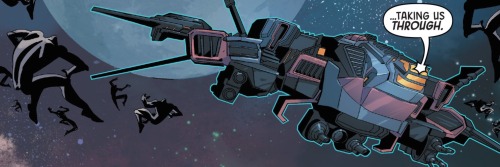
So intent on fulfilling this mission, Medusa, the former Queen of The Inhumans, had managed to put off the intense ailment growing within her. And yet, as the Astarion broke orbit, locks of her prehensile hair had begun to fall from her head and she could resist it no longer… The last issue ended with Medusa announcing to her crew that she was dying.
Refusing to go back, The Astarion courses toward the edge of the solar system as Medusa lay in the medical bay with all manner of advanced equipment scanning her. Her once impossibly long hair having all but dissipated, leaving behind close cropped pixie cut (somehow she still looks good).
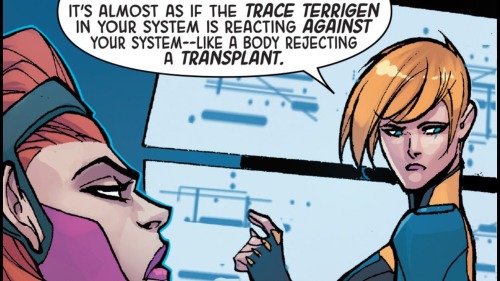
The Astarion is named after a hero of ancient Inhuman lore, yet it seems as though the ship may actually belong to Marvel Boy; or at least he is much more familiar with its advanced workings than the others. Crystal cannot make sense of the readings regarding her sister’s failing health; yet Marvel Boy has little difficulty understanding them.
Marvel Boy, or Noh-Varr, hails from an alternate reality, a different Kree Empire whose technology was centered on a strange psycho-conceptual basis. The Kirby engines of his former ship were fueled by ideas whereby the power of epiphany enabled jumps between realities. The strange nature of this technology colors Marvel Boy’s thinking allows him to see what it is that is so afflicting Medusa: she is dying of metaphor.

Marvel Boy explains that Medusa had made the decision to destroy the Terrigen Cloud. She did what she had to in order to save the Mutant race, but in so doing she had doomed the future of her people. Terrigen is a living force, Marvel Boy explains, it warps reality and changes biology and in as such blurs the line between science, mysticism and magic. Medusa had pressed the button that took that all away and the enormity of the act has had the consequence of gradually draining the life energies from her. Akin to dying of a broken heart, Medusa had acted to end a cultural heritage that had lasted millennia and her body has essentially chosen to end with it.

The others have no choice but to take Marvel Boy at his word, there is no other explanation for Medusa’s condition. Nor is there a cure. And yet, if their mission is a success, if they can ascertain the secrets of Terrigen and bring a new source of it back to their people, then it stands to reason that Medusa too will be revitalized (if she can hang on that long).
Oddly, Black Bolt, Medusa’s one-time husband and the loves of each other’s lives, remains cold and distant… almost aloof. He is being told that his soulmate is dying and it seemingly has little effect on him; a matter not lost on Medusa nor the others.
Gorgon, however, has no such resistance to gushing over his dying queen. Medusa continuously corrects him, she is no longer Queen of The Inhumans and doesn’t require being called by a royal title, but Gorgon refuses to do so. For him, she will always be his queen and his pledges his undying fidelity to her.

It is all too much for young Flint. Seeing Medusa in this condition overwhelms him with the memories of his adoptive parents dying, of his biological parents essentially abandoning him. Medusa has become a powerful maternal figure to Flint and the prospect of losing her as well is too much to bear. Panicked, unable to catch his breath, Flint runs from the room.

The dramatic scene is cut short by Captain Swain who calls down from the command center that the proximity sensors have altered them to a rapidly encroaching threat. A massive swarm of Chitauri has entered the system on a trajectory that the Astarion cannot circumnavigate. Trying to turn would just cause the swarm to hit the craft on its broadside and the team has not choice but to gear up and fight their way through the mass of space invaders.
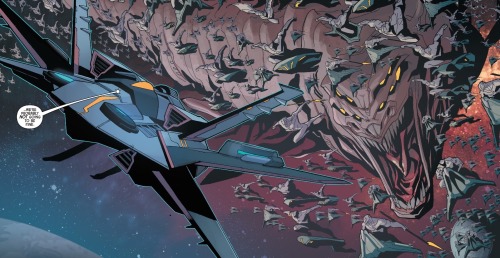
The others hurry to their stations and Medusa rallies as well; she may be dying but is insistent on doing so on her feet. Gorgon objects but Medusa will not hear it; she may no longer be queen, but she is still the commanding officer of the ship.
Medusa orders Swain to utilize her empathic abilities to help the crew feel a sense of calm and confidence. Marvel-Boy has adjusted the weapons systems of the craft so to interface with his and Crystal’s powers. His guns are configured virtual reality into the ship’s cannons; and Crystal’s elemental powers are likewise channeled into the Astarion’s weapon systems.
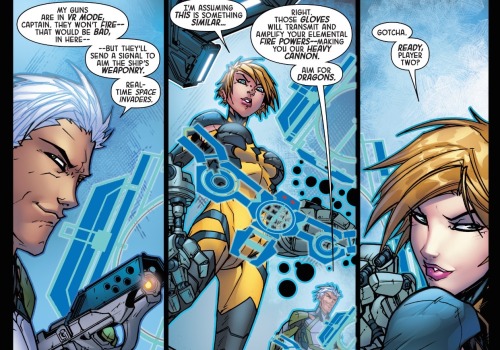
The two fire relentlessly into the Chitauri, blasting apart the various dragons and goblins that make up the swarm; yet they are hardly able to make a dent. Gorgon and Flint, meanwhile, have put on space suits and cling to the exterior hull of the craft. Gorgon uses his super strength to punch and rip apart the various goblins that come into his grasp.
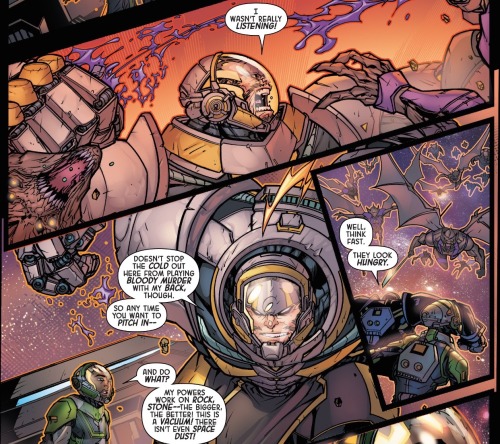
Flint, however, is unsure what to do. His Inhuman abilities entail the power to control rocks and minerals and there are no such things in the vacuum of space.
Medusa offers Flint a rather stern pep talk over the comms system, ultimately directing his attention to the planetoid of Pluto that The Asterian is now passing. Pluto is essentially a rock and ostensively should be under Flint’s control. The idea of it feels too big to Flint, a feat well outside of the scope of his ability, but Medusa presses on: he has to attempt it, he must succeed.
Flint concentrates, reaching out and feeling for his connection to the geological make-up of Pluto. Suddenly he understands how to do it; it is not about pushing but rather pulling, like opening a door. Flint pulls Pluto slightly off its axis, creating a massive gravitational well that sucks in a large swath of the swarm and smashes them against the surface of the planetoid.
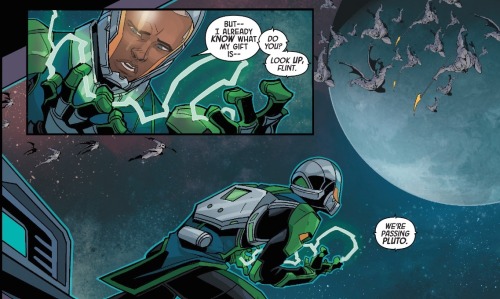
How such a thing might work goes well beyond this reader’s rudimentary understanding of astrophysics, but somehow Flint’s action creates a hole in the swarm that The Astarion is able to fly through… allowing the craft to safely pass. The others are astounded by Flint’s awesome feat.
What The Chitauri are doing in the solar system, where the swarm is headed is unknown, yet Medusa is confident that Captain Marvel’s defensive shields are more than capable of repelling the swarm if it is headed toward Earth. She has more pressing matters to attend to: specifically Black Bolt. Or is it Black Bolt?

Medusa tells him that he can drop the act; she knows who he really is. The lack of intimacy and communication between them was enough of a giveaway on its own; his shrinking in the face of the Chitauri threat has sealed it. He is not Black Bolt, he is Maximus! Somehow Maximus has traded places with his brother.
Discovered, Maximus merely smiles and sheds his psychic disguise. ‘Maximus The Mad,’ he sneers, ‘at your service.’
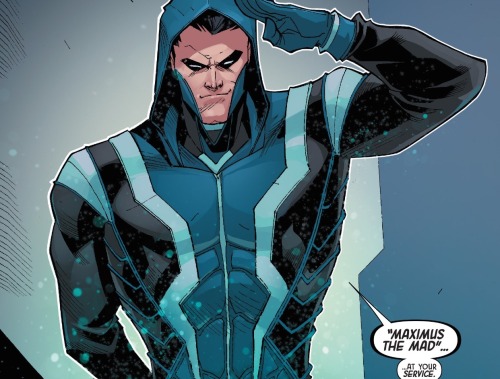
And it is with this surprising twist that the issue ends with the promise of continuation in the next installment.
As was the case with the first issue, this issue begins with a prologue set thousands of years in the future. It shows a thus far unspecified realm where the last Inhuman shepherds a flock of ghostly beings, techno-astral projections encased in human-snapped bags. These wraiths operate and monitor the workings of some unknown citadel, maintaining vigilance against looming threats. A claxon sounds off heralding the approach of such a threat. It is a ‘memento mori’ a reminder that there can be no escape from the inevitability of death.

It remains unknown how these prologue vignettes relate to the story at hand; the two are certain to tie together in a future issue. Also unknown is the identity of this ‘last Inhuman.’ Although lithe and aged, he bears a resemblance to Black Bolt… although he could be Maximus. It’s a mystery I’m looking forward to see uncovered.

A suitable follow up to a fantastic first issue. Writer, Al Ewing’s script is tight and well-paced. Ewing doubles down on the outré science fiction thematic of the tale and does so unapologetically, rapidly moving from one way-out idea to the next so quickly that there isn’t time to step back and take note that none of it makes sense. It all sort of merges science fiction with magical realism.
The concept that Medusa is dying from the ‘poetic revenge of a mystical element’ is wonderfully bizarre… like something pulled from a Gabriel Garcia Marquez novel. Whereas Marvel Boy’s tethering Crystal’s powers into the Astarion’s weapons system via virtual reality feels like something from Orson Scott Card’s Ender’s Game. Ewing mixes together these disparate elements of science-fiction and fantasy in a seamless fashion, creating a wild tale where the reader simply has no choice but accept the bizarre ideas thrown our way.
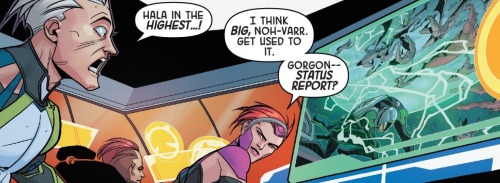
Although the signs were all there I was still rather surprised by the reveal that Maximus had switched places with his brother. Others had guessed this twist before I had (*cough* Adam and Seren). It sets things up nicely for the Black Bolt solo series scheduled to launch next month; which will see Black Bolt stranded in some sort of cosmic penitentiary (a fate that was meant for Maximus as punishment for his crimes).

The theory had been that Maximus had engineered some kind of body swap, projecting his consciousness into Black Bolt’s body and trapping Black Bolt’s consciousness in his own body. Although now it appears that Maximus has used a new trick, creating a psychic disguise making him appear to be Black Bolt and Black Bolt appear as Maximus. And this explains how Black Bolt can appear in his solo series in his own body with his own powers.
Maximus’ capacity to create such an illusion is a new wrinkle on his power-set, but a welcome one in that it sets up this wild twist. Of course this also means that team will be without the aide of Black Bolt and instead will be saddled with Maximus’ unreliable tomfoolery… a matter that is sure to make their mission all the more difficult to achieve.
Ewing’s dialogue is equally crisp, managing an impressive balance between the high concept ideas and the heavy emotions the characters are all feeling. A highlight is Medusa’s efforts to goad Flint into expanding his powers so to control Pluto’s orbit.
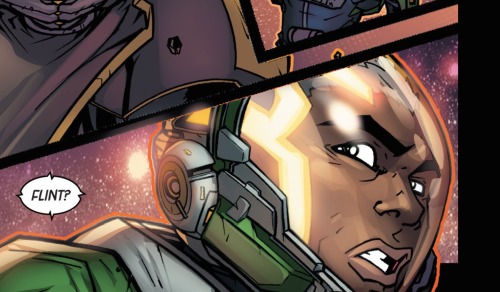
Medusa chooses an interesting psychological approach, baiting Flint with his fears and issues of abandonment. She forces Flint to face his anxiety, channeling his panic into his powers and ultimately helping him to extend his abilities to a huge new limit. Not exactly a tactic I’d utilize in psychotherapy, but a method that proves effective nonetheless.
Unfortunately, the issue’s art is not quite on par with the script. Jonboy Meyers shares penciling duties with Thony Silas with each artist illustrating alternating scenes. Silas seems to be trying to mimic aspects of Meyers’ style in an attempt to maintain a sense of aesthetic continuity, but the effort is unsuccessful. Silas is a great illustrator, but not great at imitating Meyers and the result is that Meyers’ pages are just notably better; and the shift in quality is quite jarring, so much so that it at times took me out of the story. It’s unclear whether or not The Royals is going to continue as a bimonthly book. If this is to be the case, then it might be wise for Meyers and Silas to trade off illustrating individual issues on their own. In my opinion the two are better apart than they are in tandem.

The chapter is entitled ‘We Are The Dead’ and is named after the David Bowie song from his 1974 album, Demon Dogs. It’s an appropriate tile in lieu of that song; you can listen to it here.
The illustrative hiccup notwithstanding, another fanatic ride and definitely recommended; Four out of Five Lockjaws!

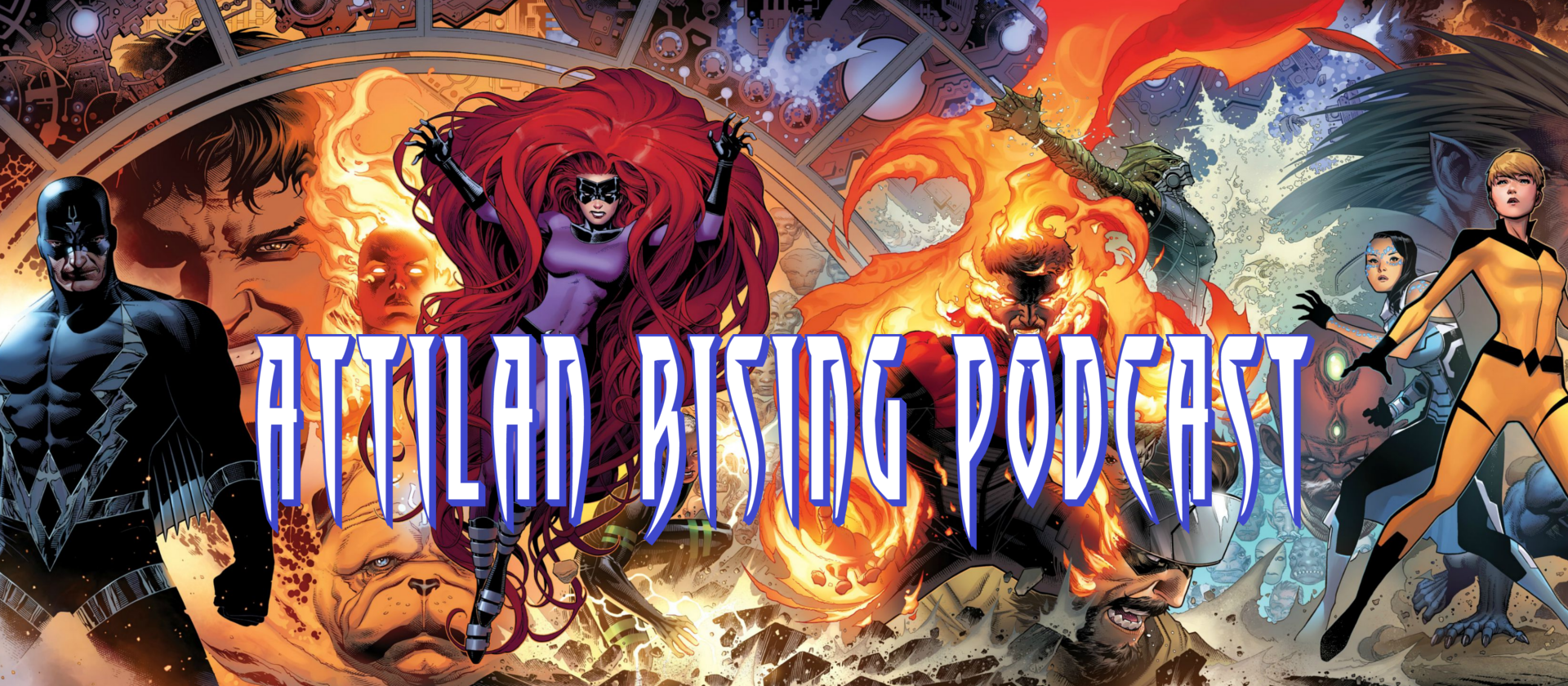
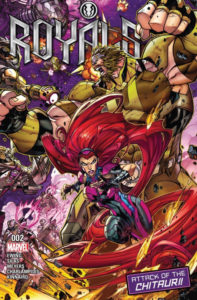
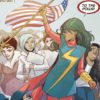 Ms. Marvel #13 Review Recap
Ms. Marvel #13 Review Recap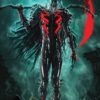 Death of The Inhumans #2 Review (spoilers)
Death of The Inhumans #2 Review (spoilers) Fantastic Four #2 Review (spoilers)
Fantastic Four #2 Review (spoilers) Black Bolt #4 Review (spoilers)
Black Bolt #4 Review (spoilers) Marvel Uprising #0 Review (spoilers)
Marvel Uprising #0 Review (spoilers)